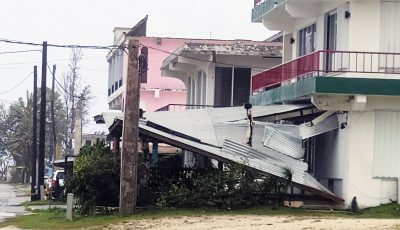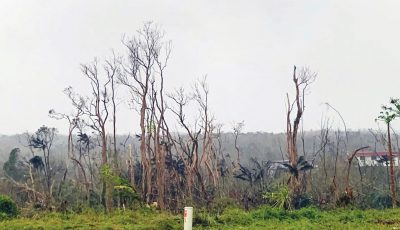Navy plans ‘lookout’ mitigation for sonar, sea training
The U.S. Navy plans to “lookout” for marine mammals during sonar and gunnery training over the next five years so they can prevent harm to them.
According to Joint Region Marianas public affairs officer Lieutenant Timothy Gorman, mitigations for the Marianas Islands Training and Testing, or MITT, activity are similar to those utilized in the Marianas Islands Range Complex, or MIRC document completed about five years ago.
The MITT appears to replace and expand on activity and mitigation from the MIRC, which was completed in 2010. Navy activity described in this document has since been authorized.
Gorman told Saipan Tribune that most mitigation utilizes trained lookouts and mitigation zones.
For sonar, the ships will first power down sonar when an animal is spotted within 1,000 yards. An additional power down would occur at 500 yards, and within 200 yards the system is shut down,” he explained.
For other events such as gunnery exercises, he said, a mitigation zone of predetermined size is observed to ensure no marine mammals are present.
“The exercise will not commence until the zone is clear, and events in progress will cease if a marine mammal is seen to enter the mitigation zone,” Gorman said.
These size of these mitigation zones are further detailed in the MITT impact studies available online, specifically, chapter five of the final impact document.
Effectiveness
According to these documents, personnel standing watch have multiple job responsibilities. While on duty, the Navy says, watch personnel often conduct marine species observation in addition to their primary job duties, like, aiding in navigation of a vessel, for example.
“By having one or more lookouts dedicated solely to observing the air and surface of the water during certain training and testing activities, the Navy increases the likelihood that marine species will be detected,” the Navy states.
According to the Navy, the number of training and testing activities involve multiple vessels and aircraft, thereby increasing the cumulative number of lookouts or watch personnel that could potentially be present during a given activity.
But they conceded that while using lookouts is expected to increase the likelihood that marine species will be detected at the surface of the water, “it is unlikely that using lookouts will be able to help avoid impacts on all species entirely due to the inherent limitations of sighting marine mammals and sea turtles.”
The Navy says the probability of visually detecting a marine animal is dependent upon two things: an animal must be present in an area to be seen, and an animal that is present in the area of observation must be positioned or behaving in a way that will allow for a visual detection.
“For example, an animal may not be visually detectable if it is swimming entirely under the water at a relatively far distance from a boat. Second, the observer must perceive the animal when the animal is in a position to be detected,” the Navy explains.
To gauge the effectiveness of these lookouts, the Navy in 2010, contracted researchers from Australia develop data collection protocols which were used to train Navy personnel.
Beginning that same year, the trained Navy marine mammal observers collected data during field trials. The Navy called these first studies their “proof of concept” phase where they refined their methods.
So far, field trials have been conducted in the Hawaii Range Complex, Southern California Range Complex, and Jacksonville Range Complex with a total of 16 embarks through March 2015.
“Data collection is ongoing, and analysis will be conducted when the data set is large enough to produce statistically significant results. The Navy plans to conduct four embarks per year until the data set is sufficient, which at current estimates may require 4-8 more years of effort,” the Navy said.



























